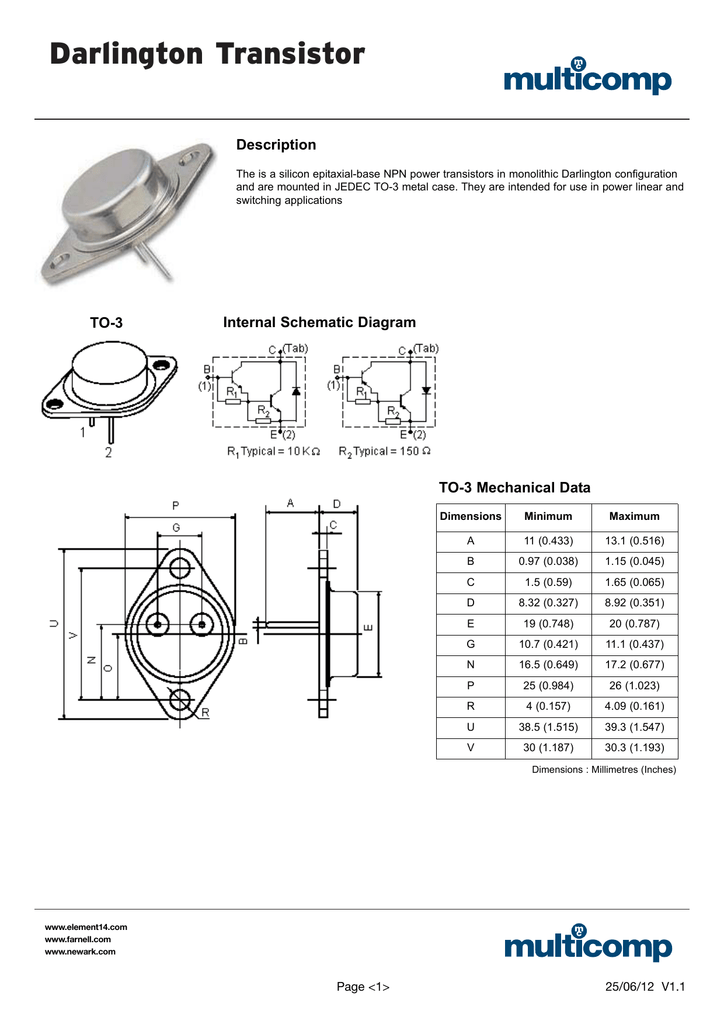

Integrated Darlington pairs come packaged singly in transistor-like packages or as an array of devices (usually eight) in an integrated circuit.ĭarlington pairs are available as integrated packages or can be made from two discrete transistors Q 1, the left-hand transistor in the diagram, can be a low power type, but normally Q 2 (on the right) will need to be high power. Integrated devices can take less space than two individual transistors because they can use a shared collector. The Darlington pair has more phase shift at high frequencies than a single transistor and hence can more easily become unstable with negative feedback (i.e., systems that use this configuration can have poor phase margin due to the extra transistor delay). This resistor provides a low-impedance discharge path for the charge accumulated on the base-emitter junction, allowing a faster transistor turn-off. To alleviate this, the second transistor often has a resistor of a few hundred ohms connected between its base and emitter terminals. The increased low output level can cause troubles when TTL logic circuits are driven.Īnother problem is a reduction in switching speed or response, because the first transistor cannot actively inhibit the base current of the second one, making the device slow to switch off. For equal collector currents, this drawback translates to an increase in the dissipated power for the Darlington transistor over a single transistor. Β D a r l i n g t o n = β 1 ⋅ β 2 + β 1 + β 2 always.) Thus the "saturation" voltage of a Darlington transistor is one V BE (about 0.65 V in silicon) higher than a single transistor saturation voltage, which is typically 0.1 - 0.2 V in silicon. In fact, integrated devices have three leads (B, C, and E), broadly analogous to those of a standard transistor.Ī general relation between the compound current gain and the individual gains is given by:

BehaviorĪ Darlington pair behaves like a single transistor with a high current gain (approximately the product of the gains of the two transistors ).

He patented the invention of having two or three transistors on a single chip sharing a collector. The Darlington configuration was invented by Bell Laboratories engineer Sidney Darlington in 1953.


 0 kommentar(er)
0 kommentar(er)
